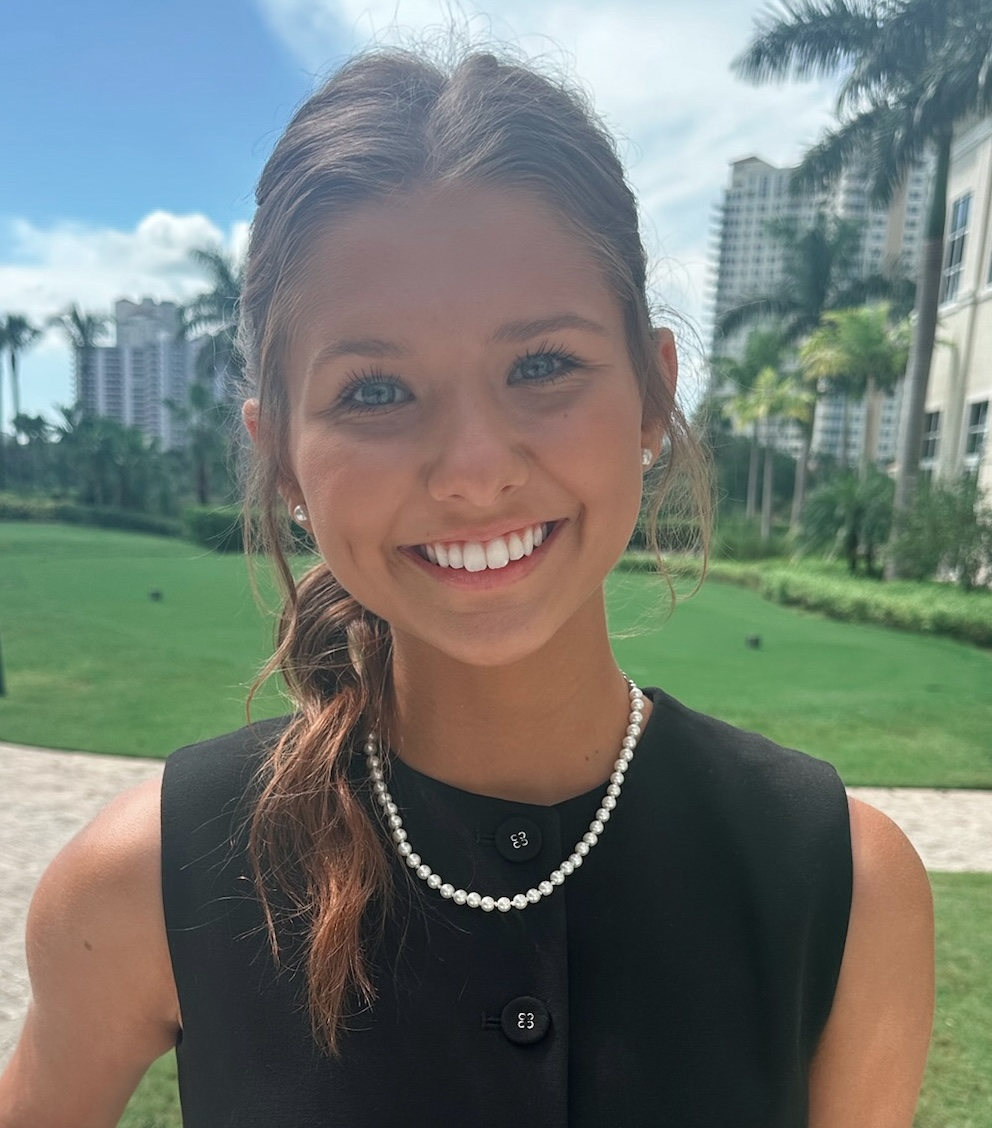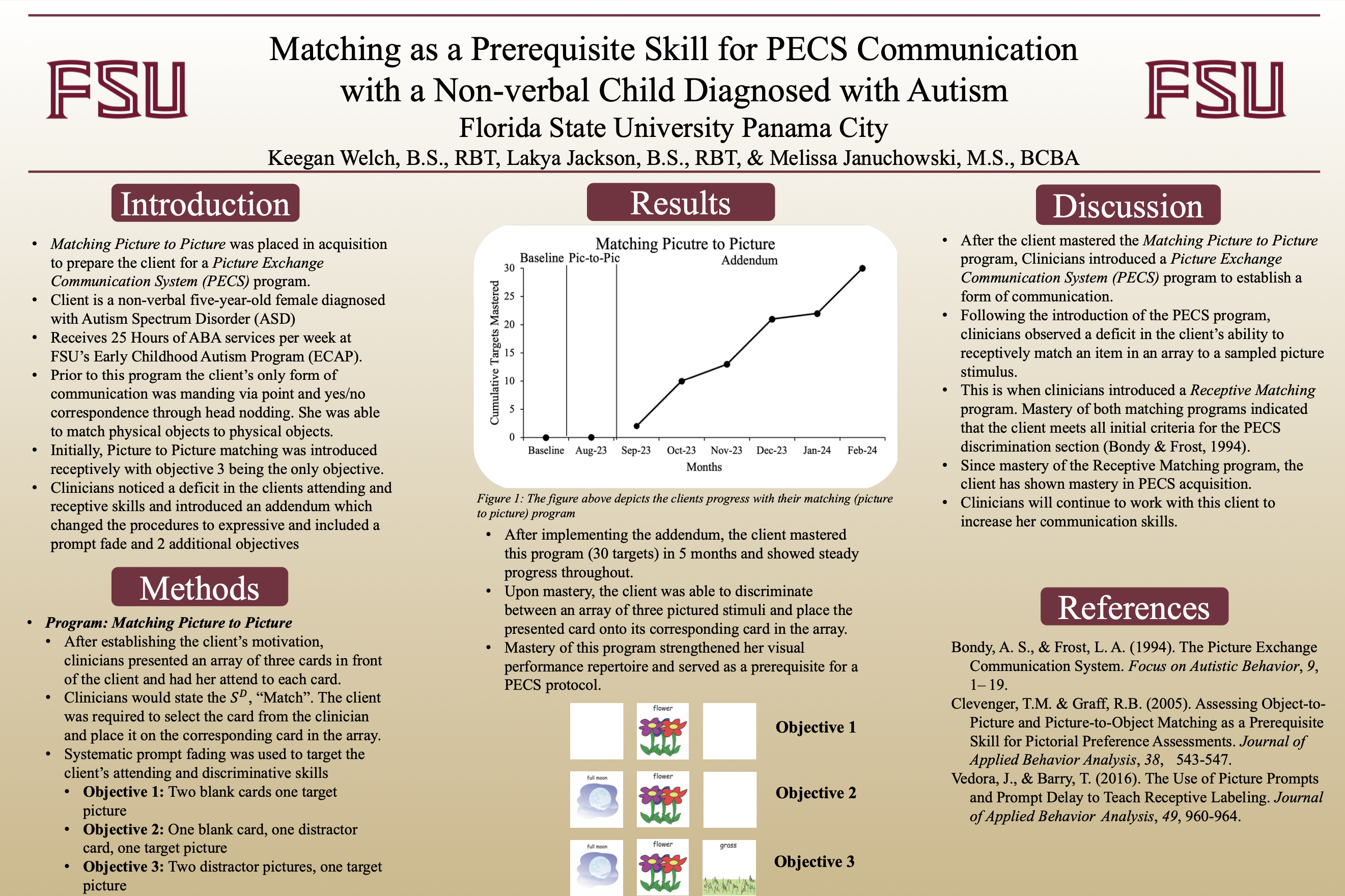Research Symposium Program - Individual Details
5th annual Undergraduate Research Symposium, April 17, 2025
Keegan Welch C-1 R - 5

BIO
Keegan is a graduate student at FSU Panama City's Applied Behavior Analysis (ABA) Program. She is completing her practicum hours at FSU's Early Childhood Autism Clinic where she provides direct 1:1 therapy to individuals diagnosed with autism and other developmental disabilities. Keegan enjoys applying research in the clinical setting to aid her clients in living the most independent life possible. Watching clients progress and add new skills to their repertoire is the most rewarding part of her work. Keegan takes advantage of any opportunity to share her work to educate others on the field of ABA!
Matching as a Prerequisite Skill for PECS Communication with a Non-verbal Child Diagnosed with Autism
Authors: Keegan Welch, Melissa JanuchowskiStudent Major: Applied Behavior Analysis
Mentor: Melissa Januchowski
Mentor's Department: FSU ECAP Mentor's College: Florida State University Co-Presenters:
Abstract
The client is a five-year-old female who is non-verbal and diagnosed with Autism Spectrum Disorder. She has received services at FSU’s Early Childhood Autism Program since January 2023. Currently, her primary form of communication is a Picture Exchange Communication System (PECS). To jumpstart prerequisites for this communication system, clinicians elected to introduce a Matching Picture to Picture program. This required the client to scan an array of three pictures and place the corresponding matching stimulus on top of the corresponding identical stimulus in the array. An addendum was made to this program when clinicians observed the client’s inability to discriminate across the various picture stimuli. This addendum included three objectives and faded in the number of distractor stimuli present. After the client mastered this program, Clinicians introduced a PECS program to establish a form of communication. Following the introduction of the PECS program, clinicians observed a deficit in the client’s ability to receptively match an item in an array to a sampled picture stimulus. A Receptive Matching program was then introduced in which clinicians held an example stimulus and the client was required to scan an array of three various nonidentical stimuli cards and pick up the corresponding matching stimulus. Mastery of both matching programs indicated that the client met all initial criteria for the PECS discrimination section (Bondy & Frost, 1994). Since mastery of the receptive matching program, the client has mastered her PECS program and uses her PECS board spontaneously in both the home and clinical settings.

Keywords: Communication, Matching, Prompt fading

